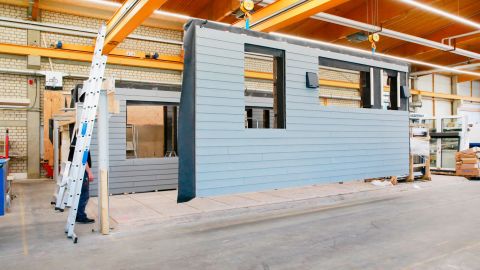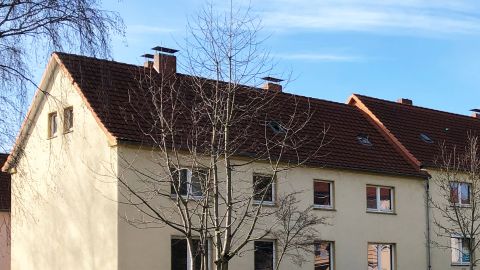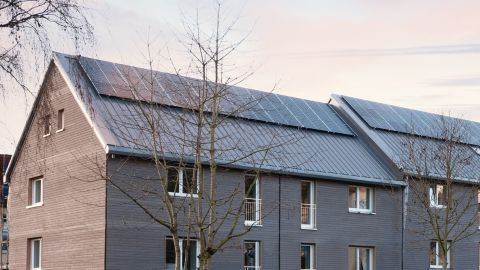London
CNN Business
—
With soaring energy prices, home insulation is becoming increasingly important. But old buildings that fail to keep in the heat are not only expensive for residents — they’re also costly for the climate.
In the European Union, where buildings account for 40% of energy consumption and 36% of CO2 emissions, new construction alone won’t be enough to fix the problem. For that, old homes need to be retrofitted to make them more energy efficient.
Ecoworks, a German startup, thinks it has the answer. The company uses laser scanning technology to create a digital twin of a building. It then produces prefabricated panels that fit precisely over the old building, improving its insulation.
“The world cannot afford, financially but also from the CO2 budget, to tear down all the old houses and build new ones with cement and steel,” says Emanuel Heisenberg, the company’s founder and CEO. “We need to renovate … and transform buildings into carbon sinks.”
Shunning the carbon-intensive materials typically used in construction, Ecoworks uses renewables such as wood for the paneling and cellulose for insulation. It installs electric heat pumps inside homes, which it says are more efficient than gas boilers, and fits a modular roof with built-in solar panels, helping the buildings produce more energy than they consume.
The company’s first major renovation project, in 2019, was of a 1930s apartment block near Düsseldorf. The building was hugely inefficient, using 369 kilowatt-hours of energy per square meter, way above the EU average. Since the Ecoworks renovation, the homes produce 20% more energy than they consume, says Heisenberg.
Heisenberg says the entire “second skin” — which includes windows, ventilation, heating and hot water pipes — can be installed in just two to three weeks. He adds that 80% of the on-site labor that would normally be needed is moved to the factory, making it cheaper than conventional methods, and less disruptive. Residents only have to leave their homes for about two days with Ecoworks retrofits, as opposed to six to eight weeks with conventional renovation.
Despite the benefits of retrofitting, progress has been slow. According to the European Commission, about 35% of Europe’s buildings are more than 50 years old and almost 75% are energy inefficient. Only 1% is renovated each year.
The Commission has introduced stronger regulations on energy performance to incentivize developers. Public and residential buildings deemed the least efficient are required by law to be renovated before 2030.

“Building energy performance is vital to achieving our decarbonization targets,” says Ian Hamilton, a professor of energy at University College London. Hamilton is author of the UN 2022 global status report for buildings and construction, which found that the sector’s CO2 emissions hit a new high in 2021.
“Not only will energy efficiency reduce the amount of renewable energy needed, but more efficient buildings can be lower cost, more comfortable, healthier, and more resilient to climate change,” he says.
Introducing building energy codes and financial incentives will be crucial in increasing investment in renovation, he adds.
In Germany, this is already happening, according to Heisenberg. “Now they [building developers] are faced with regulation, they have to renovate,” he says. This year the company has retrofitted 320 apartments, and demand is rising, he adds. Next year Ecoworks will start the planning process for more than double that number.
So far, the company has focused on Germany, but by 2024 Ecoworks wants to start expanding into other parts of Europe, such as Austria and Switzerland, which have a similar stock of apartment blocks built between the 1950s and the 1980s.
Read More:How covering old buildings in a ‘second skin’ could cut heating costs, and emissions
2022-11-29 10:53:00


